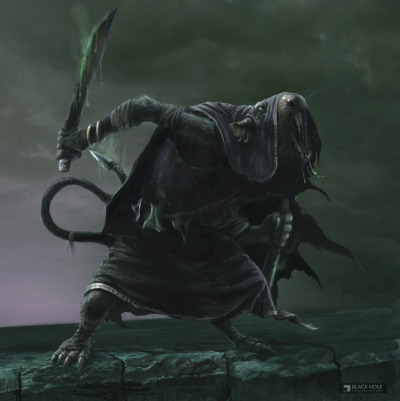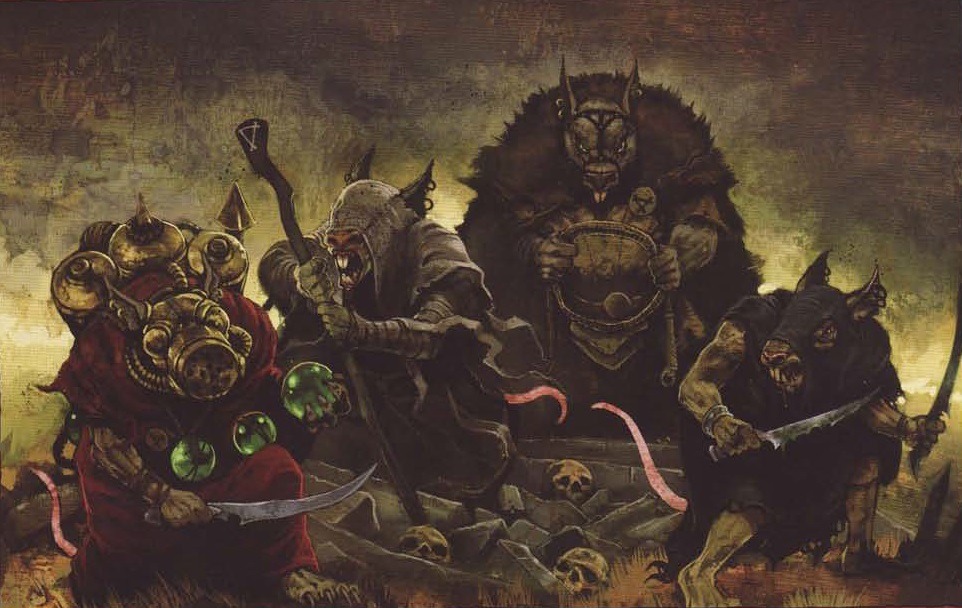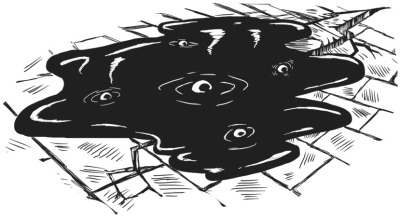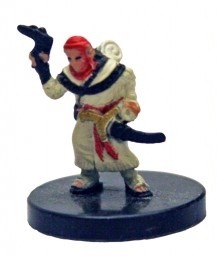 Tsetsig is a cleric of Tenon from the island of Thule. He has travelled to the far off city of Adamas for . . . personal reasons. Tsetsig takes exception to his people being called barbarians because he knows that in truth, all current "civilizations" are in fact barbaric shadows of the once great Thulian empire. Tsetsig wishes to explore Dwimmermount to find evidence of his people's rise to greatness against the Eld, and in doing so lay out a template for how they can rise again and restore the Pax Thulia. It doesn't matter to him if the evidence is real, as long as it can be made to support his goal. He is not naive. He is supremely practical and recognizes that convincing lies are often more effective than confusing truths. Tsetsig has recently escaped from years of prison in Adamas. His body is weakened, but his strength of will has grown great.
Tsetsig is a cleric of Tenon from the island of Thule. He has travelled to the far off city of Adamas for . . . personal reasons. Tsetsig takes exception to his people being called barbarians because he knows that in truth, all current "civilizations" are in fact barbaric shadows of the once great Thulian empire. Tsetsig wishes to explore Dwimmermount to find evidence of his people's rise to greatness against the Eld, and in doing so lay out a template for how they can rise again and restore the Pax Thulia. It doesn't matter to him if the evidence is real, as long as it can be made to support his goal. He is not naive. He is supremely practical and recognizes that convincing lies are often more effective than confusing truths. Tsetsig has recently escaped from years of prison in Adamas. His body is weakened, but his strength of will has grown great.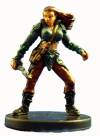 Ilona Qoyor Enq is a noble from far off Thule, a cousin to Tsetsig, and a fierce warrior. She had a troubled life back home, and lost favor and positioning with her family due to her emotional conflicts around a bitter family rival. Rather than see her political position compromised further, she ventured to Adamas to rescue her cousin from prison, and now has become interested in the legend of Dwimmermount for she has heard stories that there are miraculous machines that can grant people magical powers without the need for study or training.
Ilona Qoyor Enq is a noble from far off Thule, a cousin to Tsetsig, and a fierce warrior. She had a troubled life back home, and lost favor and positioning with her family due to her emotional conflicts around a bitter family rival. Rather than see her political position compromised further, she ventured to Adamas to rescue her cousin from prison, and now has become interested in the legend of Dwimmermount for she has heard stories that there are miraculous machines that can grant people magical powers without the need for study or training.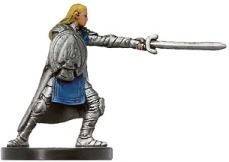 Horatius is a former soldier in the Adamas militia, but after mustering out has turned to mercenary work. When Ilona first arrived in Adamas she sought out Horatius for help in freeing her cousin from prison. While Horatius has a reputation for capable fighting amongst those he's worked for, he's not famous. Because he's a local, Horatius is very familiar with how the militia of Adamas would respond to the jailbreak, and because he's a merc he knows a few people who always need underhanded work done and he acted as a liaison for Ilona's inquiries. He has little interest in Dwimmermount beyond getting rich.
Horatius is a former soldier in the Adamas militia, but after mustering out has turned to mercenary work. When Ilona first arrived in Adamas she sought out Horatius for help in freeing her cousin from prison. While Horatius has a reputation for capable fighting amongst those he's worked for, he's not famous. Because he's a local, Horatius is very familiar with how the militia of Adamas would respond to the jailbreak, and because he's a merc he knows a few people who always need underhanded work done and he acted as a liaison for Ilona's inquiries. He has little interest in Dwimmermount beyond getting rich.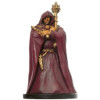 Gaius Marius Septimus is another local to Adamas who frequently works as a street busker or stage magician, but secretly his sleight of hand tricks are genuinely performed with arcane magic. While it is not illegal to use magic, sorcerers are not incredibly popular outside of academic and noble circles. Horatius hired Marius for help in falsifying prison records after Tsetsig's jailbreak and in the process of the job discovered Tsetsig's interest in exploring Dwimmermount. With rumors that people have been spotted coming and going from the mountain, Marius looked upon this as an opportunity to explore for hidden and locked away magics.
Gaius Marius Septimus is another local to Adamas who frequently works as a street busker or stage magician, but secretly his sleight of hand tricks are genuinely performed with arcane magic. While it is not illegal to use magic, sorcerers are not incredibly popular outside of academic and noble circles. Horatius hired Marius for help in falsifying prison records after Tsetsig's jailbreak and in the process of the job discovered Tsetsig's interest in exploring Dwimmermount. With rumors that people have been spotted coming and going from the mountain, Marius looked upon this as an opportunity to explore for hidden and locked away magics.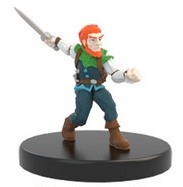 Brüghaht the dwarf was sharing a cell with Tsetsig when he broke out of prison, and managed to prove himself by neutralizing guards during their escape. Brüghaht feels a little indebted to Tsetsig for the opportunity to break free. In prison for burgling, Brüghaht is an outcast dwarf who refused to pay back the debt to his father for his "birth." He is interested in all of this talk of Dwimmermount since it is considered a holy place by all dwarves, even outcasts.
Brüghaht the dwarf was sharing a cell with Tsetsig when he broke out of prison, and managed to prove himself by neutralizing guards during their escape. Brüghaht feels a little indebted to Tsetsig for the opportunity to break free. In prison for burgling, Brüghaht is an outcast dwarf who refused to pay back the debt to his father for his "birth." He is interested in all of this talk of Dwimmermount since it is considered a holy place by all dwarves, even outcasts.They ventured up the mountain and after several hours reached the red doors that served as the main route in and out of the ancient dungeon. The doors opened quite easily and they found evidence that someone had been here before them right away in the scuffed dust along the steps. Dwarf-sized footprints. Tsetsig cast a light spell upon Horatius' shield and they strode into the first chamber.
In the main entry they found six statues, five of which all depicted the same face. Testsig recognized the statues as vandalized depictions of the gods almost immediately. Before Brüghaht could check any of the doors for traps, Horatius opened a door leading west and saw a small fire at the end of the hall. The orcs that were lounging there did not seem friendly. As the hallway became choked with orcs, Ilona realized they couldn't all see properly and lit a torch.
The orcs fell, one by one, until only one remained. His courage quavered and he ran, deeper into the dungeon. Ilona was determined not to let him escape and chased him into darkness, with Marius and Horatius close behind, but Ilona managed to strike the final blow. The party then went about exploring the adjoining rooms, chopping off orc heads, and dividing the meager treasure at their post.
Ilona explored the dark room and discovered that it was an ancient theatre. The secret passage behind the rotting curtain stuck out like an apple amongst potatoes. She opened the passage and saw light coming from another door at the other end, and while creeping up to it her cousin managed to make a hilarious racket of noise, alerting the orcs on the other side. Another battle ensued, and while many orcs fell several also fled deeper into the dungeon...
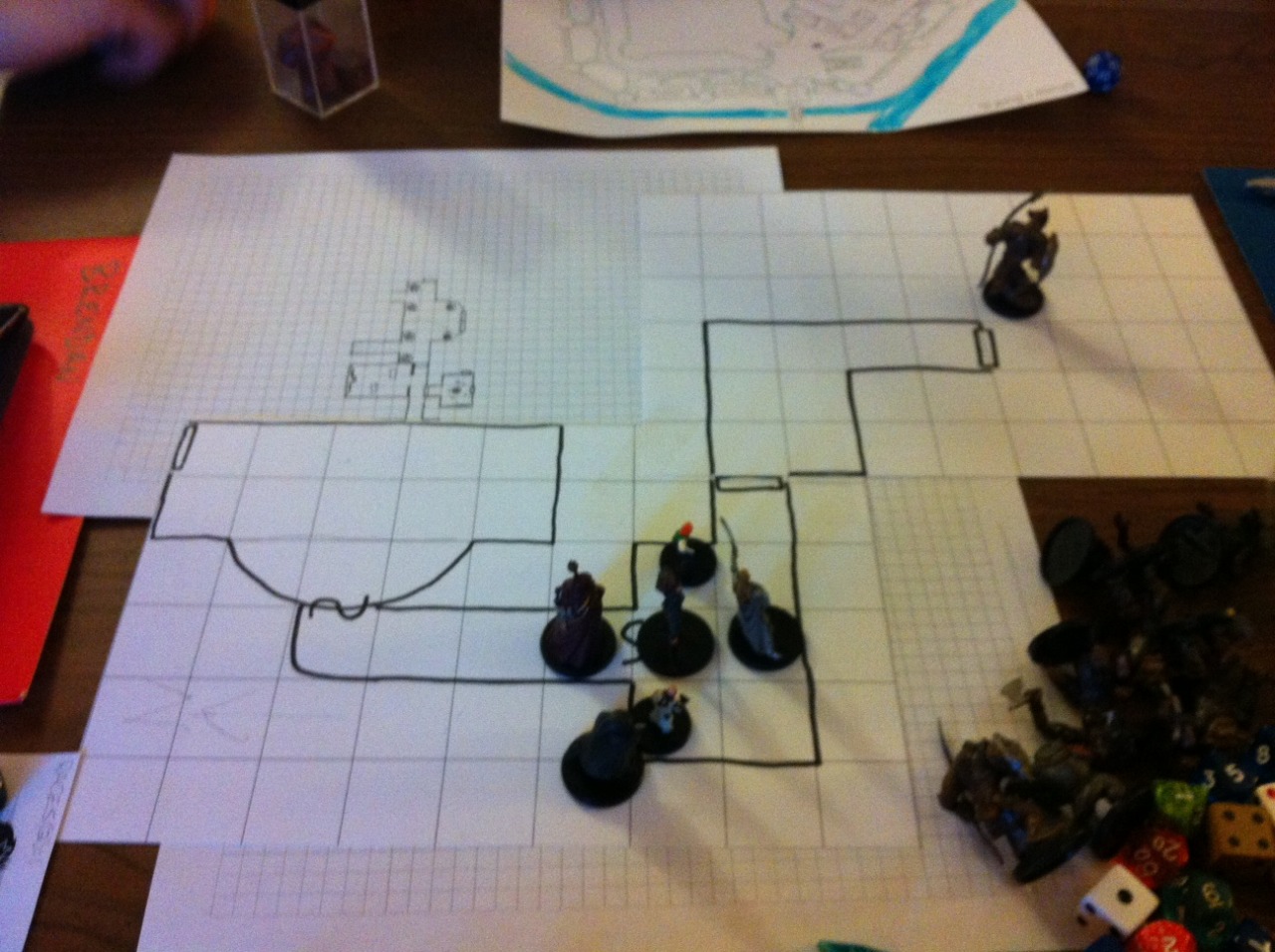
In the photo above you can see where the orc in the rear is running away (upper right) and the "thief" mini is where a tied up dwarf is sitting on the ground (lower left and 'outside' of the room).
You can also see my map technique, I'll draw the rooms on a piece of graph paper but once combat happens I have a larger grid that I draw on and tape together. It works pretty well and can easily be moved around the table which makes it less time consuming than constantly adjusting a battlemap.
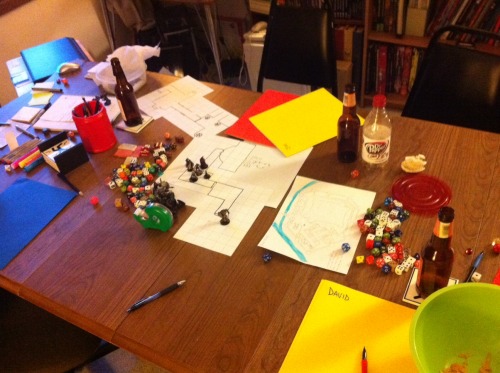
One player expressed his amazement that "this feels like an old school dungeon" and another wrote to me, saying "Maybe it was just the exhilaration of running at the monsters rather than away from them, but that was the most fun I've had playing Dungeons & Dragons in many years." I have to admit that I hoped it would feel that way but I was worried that my expectations wouldn't live up to the actual playing of the game. Instead, it was a lot of fun. I had planned the game out as a dungeoncrawl, but I don't know how much of the game's impact came from the module and how much of it came from my use of the monstrous inhabitants and straining available light sources. Going forward, I'm excited that this game is going to be fun.
Even though we spent half the session tweaking characters and faffing about in town buying equipment and learning rumors, there was still plenty of character interaction as well as tactical reformation in the heat of battle. While we're all still picking up the 5th edition rules, the battles were pretty chaotic and messy events that overall ended quickly - except when nobody was hitting anybody.
When I was prepping the adventure I printed off pages from the Dungeon Tracker which came with my pdf version - I don't remember if this was a kickstarter exclusive or if anybody can get it, but its proved itself a useful tool and I may run every future dungeoncrawl like this.
You can also see some color coding in the map page above, and while you can't see it, I have page numbers for quick reference of the Monster Manual written along the right-hand side of the map page.
In retrospect, the players didn't get very far into the dungeon but it felt like a series of hectic and stumbling fights.
Here you can see some of my color coding. The blue indicates an access point that ascends or leads outside (an orange access point would indicate descending to a lower level), and the pink highlighting of room numbers indicates a light source. This is also, literally, the only rooms that got explored or seen.
I gave the orcs in the guard post a firepit where they were roasting rats, and the orcs in the other two rooms simply have ensconced torches embedded along the walls. Orcs have darkvision but I assume they would just naturally see better with light, and they didn't have a tactical reason to extinguish light sources until some humans barged in and started slaughtering their friends.
I think the treasure in Dwimmermount is excessive and so I'm cutting the value of most treasure. I'm taking the value of treasure and dividing it by 10, and then roll dice that can't exceed double the amount. For example, in the original module the first group of orcs had 1000 gold pieces. Divided by 10 is 100, so I roll 1d100 twice and that's how many gold pieces there are. They found 98 gp!
I am giving experience points based on three metrics: exploration, discovery, and encounters.
Exploration = 5 xp for every room explored, multiplied by the square of the level of the room; each PC gets this reward even if only one character explores a room (ie. exploring a room on the second level nets 20 xp for everyone, exploring a room on the third level nets 45 xp, fourth level = 80 xp, fifth level = 125 xp, etc.).
Discovery = solving mysteries or puzzles in Dwimmermount will net 25 xp for simple mysteries, 50 xp for more complex puzzles, and 100 xp for surpassing deadly traps or scenarios; individual PCs can receive this reward for completing the task but as a rule all characters present receive the reward
Encounters = each monster or NPC has an XP value for being defeated; this XP is divided evenly amongst every PC present (if a monster or NPC is made an ally then the XP award is doubled)
Now, the module also doesn't make much of a distinction of what kinds of coins there are. References are made to Thulian and Termaxian coins, but most of the entries are generic. I've decided that Thulian coins are slightly bigger and are worth more, but the characters won't notice this unless the players actively take an interest in the coins they're finding. I've also decided that silver coins, when they appear in the text, will also be gold coins instead because I see the Termaxian Empire as having collected silver for magical items. In some hidden chambers there might be some silver, but otherwise it's just not present.
The limitations of the poor layout are starkly apparent while running the game. I found myself checking three sections of the book just to clarify the details of a single room. The paragraphs-long faction overview section could have been divided up at the beginning of the chapters where each faction is most prominent and pertinent, and the graph they included for showing the relationships between factions is difficult to read, could have used a simple diagram instead. The details about Dwimmermount's construction fill an earlier chapter that could have been trimmed down and then redistributed into the later chapters. For example, information about the entrance to Dwimmermount is on page 74 in the "Overview of the Dungeon" chapter and the details of the dungeon begin on page 117 where the only mention of the red door entrance is that they are present before the first room.
A lot of my preparations worked out really well however, and I haven't GMed a dungeoncrawl in years so I was pleased with how everything fell into place. Next week I may take more pictures of the actual session so you can see the deluge of miniatures that are on the map at once.

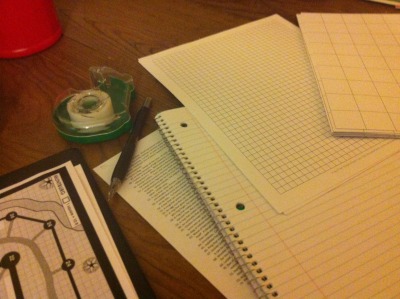 The Sunday game, in contrast, is going to embark upon a traditional dungeoncrawl using the Dwimmermount megadungeon and, coincidentally, 5th edition Dungeons & Dragons. I've been reading the book and taking notes for the last few weeks so I think I'm familiar enough with the upper levels of the dungeon that I shouldn't have any problems - I'll share more about the extensive prepping I did in a future post.
The Sunday game, in contrast, is going to embark upon a traditional dungeoncrawl using the Dwimmermount megadungeon and, coincidentally, 5th edition Dungeons & Dragons. I've been reading the book and taking notes for the last few weeks so I think I'm familiar enough with the upper levels of the dungeon that I shouldn't have any problems - I'll share more about the extensive prepping I did in a future post. 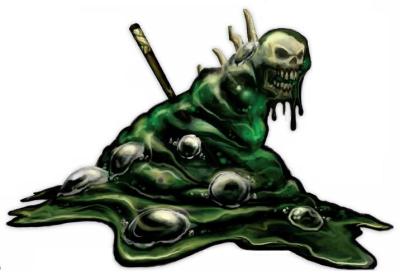
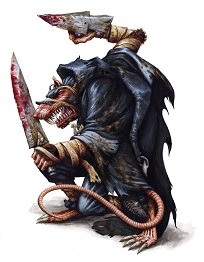 Warrens carved beneath sprawling municipalities, wickedly sharpened blades scavenged from centuries of corpses, the squeaks and scrabbling echoes of a language born of rodents, the musty and fetid scent of a black market hidden within the sewers, and the overflowing contempt of those who think they are better than the dwellers in the underdark - the ratfolk have always lived side by side with humanity, but only as cities grow have they become more noticeable, and harder to ignore.
Warrens carved beneath sprawling municipalities, wickedly sharpened blades scavenged from centuries of corpses, the squeaks and scrabbling echoes of a language born of rodents, the musty and fetid scent of a black market hidden within the sewers, and the overflowing contempt of those who think they are better than the dwellers in the underdark - the ratfolk have always lived side by side with humanity, but only as cities grow have they become more noticeable, and harder to ignore.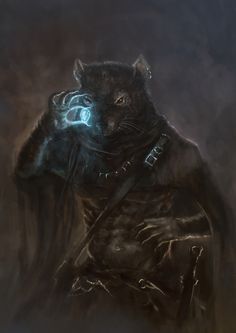 Ratkin are hoarders by nature, and as a whole are masters of commerce, though some are shrewd merchants who carefully navigate the shifting alliances of black markets and bazaars, many ratkin love their stockpiles of interesting items far more than money, and would rather trade for more such prizes to add to their hoards over mere coins. It's common to see a successful crew of ratkin traders rolling out of town with an even larger bundle than they entered with, the whole mess piled precariously high on a cart drawn by giant rats.
Ratkin are hoarders by nature, and as a whole are masters of commerce, though some are shrewd merchants who carefully navigate the shifting alliances of black markets and bazaars, many ratkin love their stockpiles of interesting items far more than money, and would rather trade for more such prizes to add to their hoards over mere coins. It's common to see a successful crew of ratkin traders rolling out of town with an even larger bundle than they entered with, the whole mess piled precariously high on a cart drawn by giant rats.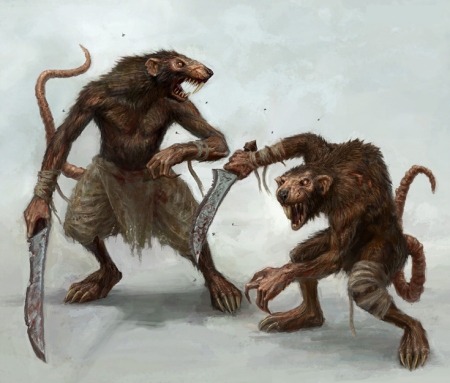 Ratkin are extremely communal, and live in large families where the mother is almost always the head of household. Ratkin share both a high birth rate and infant mortality rate, a typical litter can range anywhere between 6 to 18 infants, roughly half of whom will die during infancy. Women amongst the ratkin think of childbirth and motherhood as a solemn duty, to be unable to bear children is the worst fate to befall a female ratkin. Most ratkin are lucky to survive birth and childhood, and the rest are lucky to know who their father is. Any ratkin who can accumulate vast wealth is often given a kind of governorship over other ratkin, and while trade is important for ratkin survival they don't regard it as a very honorable profession. Warriors are valued over all, and the ratkin who protect their tunnels are always honored with free food and celebratory greetings.
Ratkin are extremely communal, and live in large families where the mother is almost always the head of household. Ratkin share both a high birth rate and infant mortality rate, a typical litter can range anywhere between 6 to 18 infants, roughly half of whom will die during infancy. Women amongst the ratkin think of childbirth and motherhood as a solemn duty, to be unable to bear children is the worst fate to befall a female ratkin. Most ratkin are lucky to survive birth and childhood, and the rest are lucky to know who their father is. Any ratkin who can accumulate vast wealth is often given a kind of governorship over other ratkin, and while trade is important for ratkin survival they don't regard it as a very honorable profession. Warriors are valued over all, and the ratkin who protect their tunnels are always honored with free food and celebratory greetings. 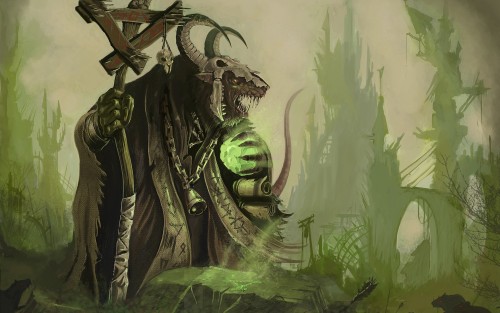 GLORY TO THE THIRTEEN
GLORY TO THE THIRTEEN